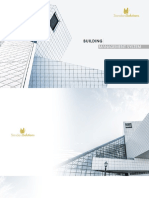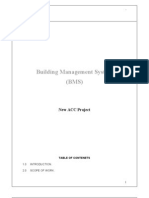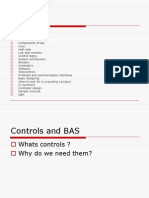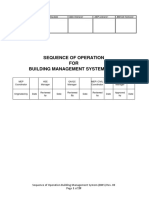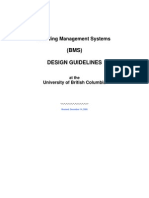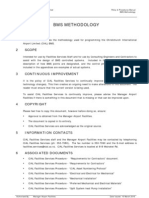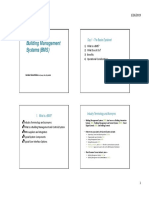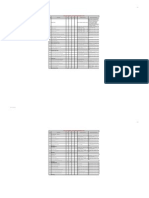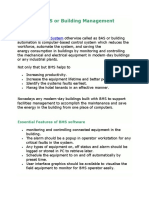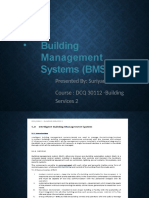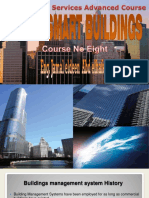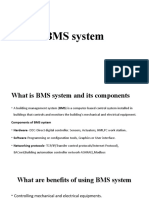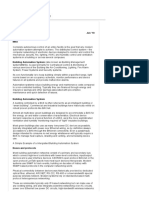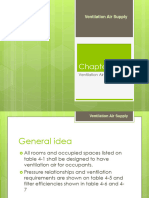96% found this document useful (24 votes)
16K views59 pagesBms System-Basic PDF
The document provides an overview of inputs, outputs, and temperature sensors used in building management systems (BMS). It discusses common sensor types like thermistors, nickel wire, and platinum for temperature measurement. It also covers pressure, humidity, light, and other sensors. The document outlines BMS system architecture and control strategies for air handling units, chillers, and other building systems. Key components of a BMS include inputs, outputs, distributed control systems, and user interfaces for monitoring and control.
Uploaded by
WaelBouCopyright
© © All Rights Reserved
We take content rights seriously. If you suspect this is your content, claim it here.
Available Formats
Download as PDF, TXT or read online on Scribd
96% found this document useful (24 votes)
16K views59 pagesBms System-Basic PDF
The document provides an overview of inputs, outputs, and temperature sensors used in building management systems (BMS). It discusses common sensor types like thermistors, nickel wire, and platinum for temperature measurement. It also covers pressure, humidity, light, and other sensors. The document outlines BMS system architecture and control strategies for air handling units, chillers, and other building systems. Key components of a BMS include inputs, outputs, distributed control systems, and user interfaces for monitoring and control.
Uploaded by
WaelBouCopyright
© © All Rights Reserved
We take content rights seriously. If you suspect this is your content, claim it here.
Available Formats
Download as PDF, TXT or read online on Scribd
/ 59





